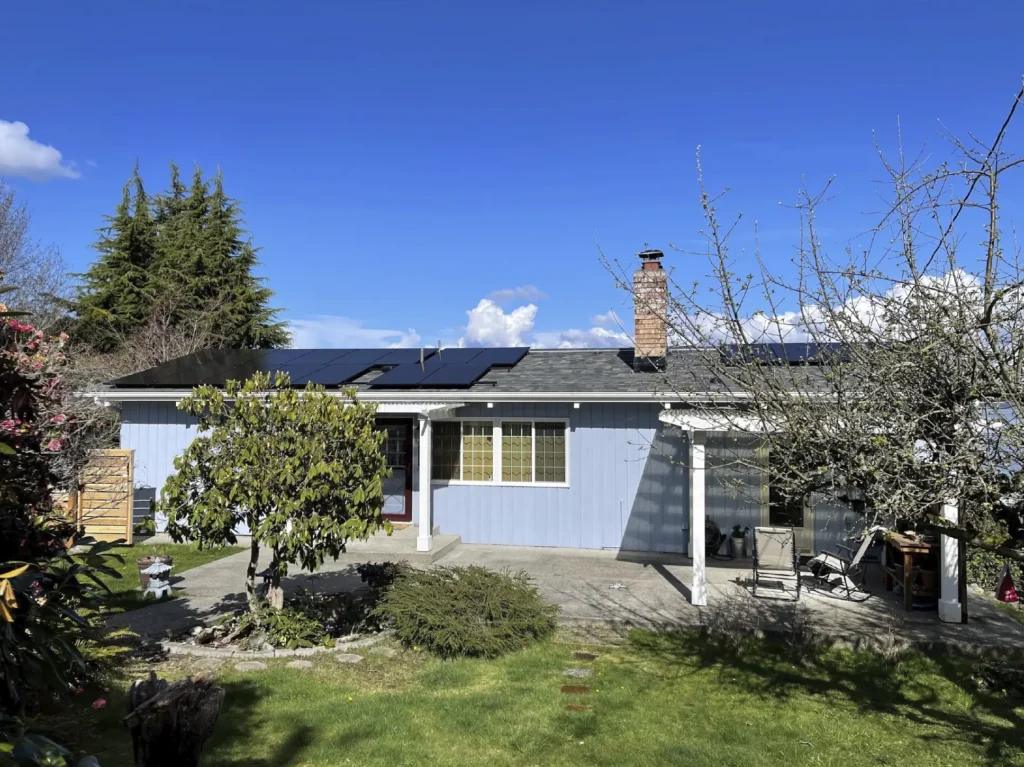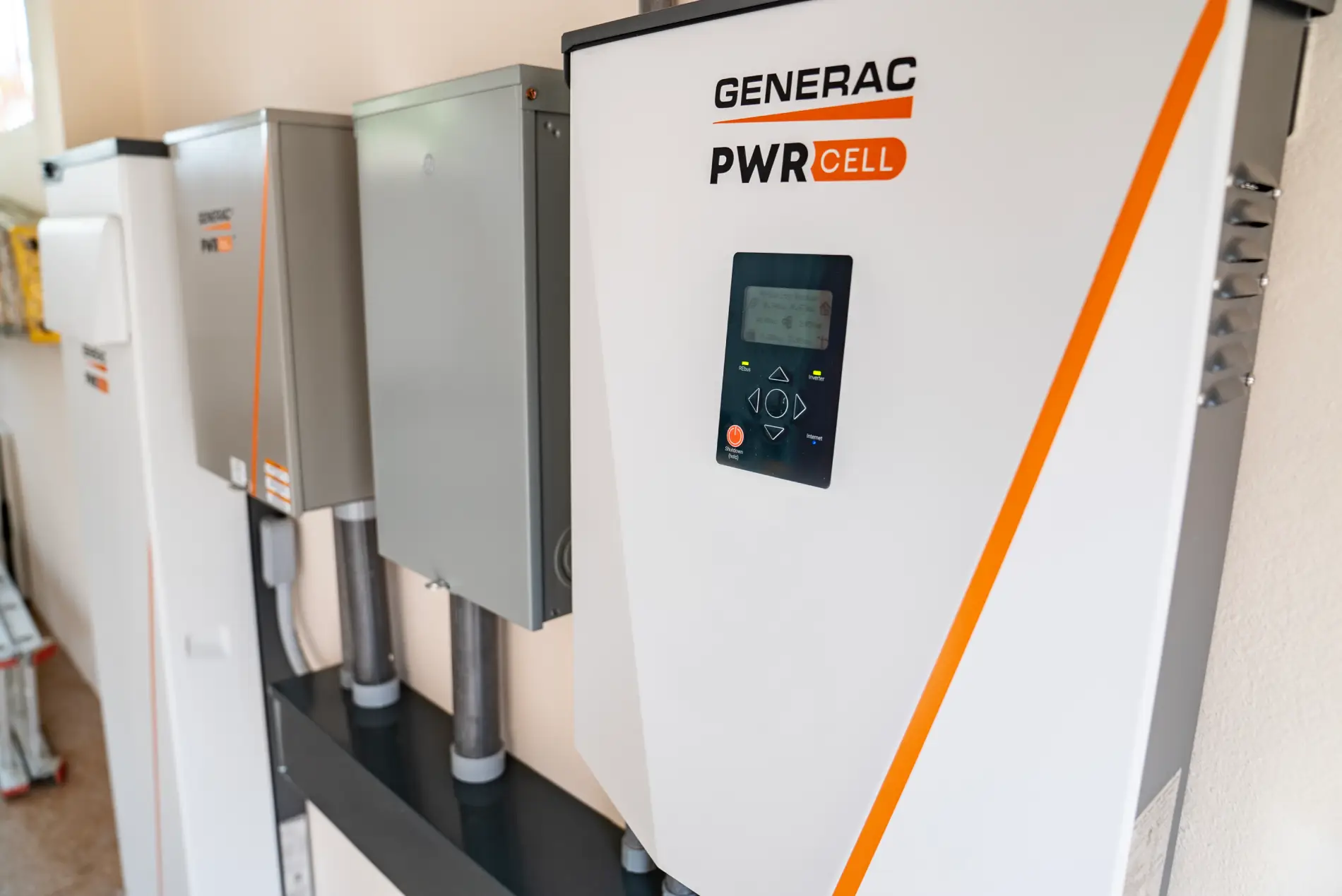Why Solar Panel Efficiency Matters
Solar panel efficiency determines how much energy can be produced from the sunlight available. The more energy generated at a time, the more affordable electricity bills can be. The most efficient solar panels are the ones that produce the most energy while taking up the least amount of space.
When investing in solar energy, efficiency matters—it determines how much sunlight your panels convert into usable electricity. But what affects efficiency, and how can you get the most out of your system? Let’s break down how modern solar panels perform and explore practical ways to maximize their output.
What is Solar Panel Efficiency? Understanding the Basics
Solar panel efficiency refers to the percentage of sunlight absorbed by the panel that is converted into usable electricity. The higher the efficiency, the more power a panel can generate from the same amount of sunlight.
Currently, the average solar panel efficiency is 21.5%, though advancements in technology continue to increase this number. Several factors influence solar energy efficiency, including panel type, manufacturing materials, and environmental conditions such as shading, temperature, and dust accumulation.
Understanding these factors can help homeowners and businesses maximize solar energy output and make informed decisions when choosing a solar system.
How Efficient Are Solar Panels Today?
Current Efficiency Levels
Common commercial solar panels, such as monocrystalline, polycrystalline, and thin-film, all have unique efficiency percentages. Of these popular types, monocrystalline panels have the best efficiency, reaching 15% to 24%. While polycrystalline panels can be durable and long-lasting, their efficiency is only about 13% to 16%. Thin-film panels have the lowest efficiency range at 8% to 17% because of their narrow structure.
Breakthrough Technologies: Maximizing Solar Efficiency
The most efficient residential solar panels use advanced designs to capture more sunlight and generate greater energy output. Among these innovations, bifacial solar panels stand out as a top choice for homeowners looking to maximize efficiency.
Unlike traditional panels, bifacial panels absorb sunlight from both the front and back, allowing them to capture reflected light from surfaces like rooftops, grass, or snow. This dual-sided absorption can significantly increase energy production, making them an optimal solution for homes with high-reflectivity surfaces or open installations.
Another breakthrough is tandem solar panel technology, which uses multiple layers of photovoltaic cells to absorb a wider range of sunlight wavelengths. The multi-layered approach improves efficiency, but bifacial panels offer more real-world energy gains, especially in the right installation conditions.
By choosing bifacial solar panels, homeowners can boost energy generation, improve long-term savings, and maximize the return on their solar investment.
Real-World Performance
There are lots of external factors that can worsen or improve solar cell efficiency. Shading, weather, and angles can all play a role. Considering the best panel placement in certain conditions can help you experience the most efficient solar panels.
Factors Affecting Solar Panel Efficiency
How Material Type Affects Solar Panel Efficiency
The efficiency of a solar panel is largely determined by its materials and construction. Different panel types offer varying levels of performance, cost, and flexibility based on how they are made.
Monocrystalline panels are made with a single, pure silicon crystal, allowing electrons to move more freely and generate electricity with higher efficiency. This design is the most efficient and long-lasting option, though monocrystalline panels come at a higher price.
Polycrystalline panels are constructed from multiple silicon fragments. Electrons encounter more barriers to move through in the material, making energy production less efficient than with monocrystalline panels. However, polycrystalline panels are a cost-effective choice for many homeowners.
Thin-film solar panels are flexible and lightweight, which is ideal for unique installations, such as curved surfaces and portable applications. However, their thinner layers of light-absorbing material result in lower efficiency compared to crystalline panels, making them best suited for situations where flexibility is more important than maximum energy output.
Choosing the right panel type depends on your budget, space constraints, and energy needs. For homeowners prioritizing efficiency and long-term performance, monocrystalline panels are the top choice. However, polycrystalline and thin-film panels can be viable alternatives for those looking for affordability or special installation.
Environmental Conditions: How They Impact Solar Efficiency
Shaded or dusty areas can harm a solar cell’s ability to convert sunlight to energy. While solar panels still generate power on cloudy days, prolonged shade can reduce output, making panel orientation and system design especially important. Homeowners can improve efficiency by using microinverters or power optimizers, which help mitigate shading effects by maximizing power at the individual panel level.
Temperature also affects solar panel performance. Lower temperatures offer the best efficiency because high temperatures can cause the semiconductor properties to shift. This can lead to a slight increase in current and a large decrease in voltage, which can harm the panel’s abilities.
With strategic installation and the right system components, solar remains an excellent energy solution for the Pacific Northwest’s climate, offering reliable power even in cloudy, cool conditions.

How to Increase Solar Panel Efficiency
Optimal Placement
One of the biggest solar panel efficiency improvements is placement. Place solar panels in the spot that receives the most sunlight throughout the day. For most properties, this is facing south, but east and west are also good placements. Make sure there aren’t any obstructions blocking the sun and causing shade on the panels. An expert solar energy provider can help you find the optimal location on your property.
Inverter Efficiency
You also need to consider the inverter during solar panel installation. Inverters operate best in a cool, dry, and shaded area. Without proper conditions, an inverter’s efficiency and lifespan could shorten. Inverters can be installed indoors or outdoors, depending on the installer’s recommendations.
Maximizing Solar Performance with Energy Storage
Integrating solar panels with solar battery storage can improve performance, reliability, and efficiency. While solar panels produce the most power during daylight hours, batteries store excess energy for use at night, during cloudy weather, or in the event of a grid outage.
If you live in an area with frequent winter storms and grid outages, a solar battery ensures your home stays powered even when the grid goes down. Instead of sending excess solar energy back to the grid for minimal credit, homeowners can store and use their own power when rates are highest or solar production is low. This reduces reliance on utility companies and protects against rising electricity costs while ensuring steady energy availability even when sunlight is limited.
With smart energy management, you can store, monitor, and optimize power usage for greater savings and reliability year-round.
Maximizing the Power of Solar Energy
Solar energy is one of the most efficient and sustainable ways to power a home, but getting the most out of it requires more than just installing panels. The efficiency of your system depends on choosing the right solar panel type, optimizing placement for maximum sun exposure, and ensuring proper integration with your home’s energy needs. Factors like shading, panel angle, and battery storage can all play a role in how much energy your system generates and retains.
Working with a trusted solar provider ensures you get a system designed for maximum performance. A professional evaluation can determine the ideal panel type, placement, and setup to maximize energy production and long-term savings for your residential solar installation.
If you’re ready to unlock the full potential of solar power, consult Clean Energy Innovators. We can tailor a system to fit your home, your energy goals, and the unique conditions of the Pacific Northwest.

